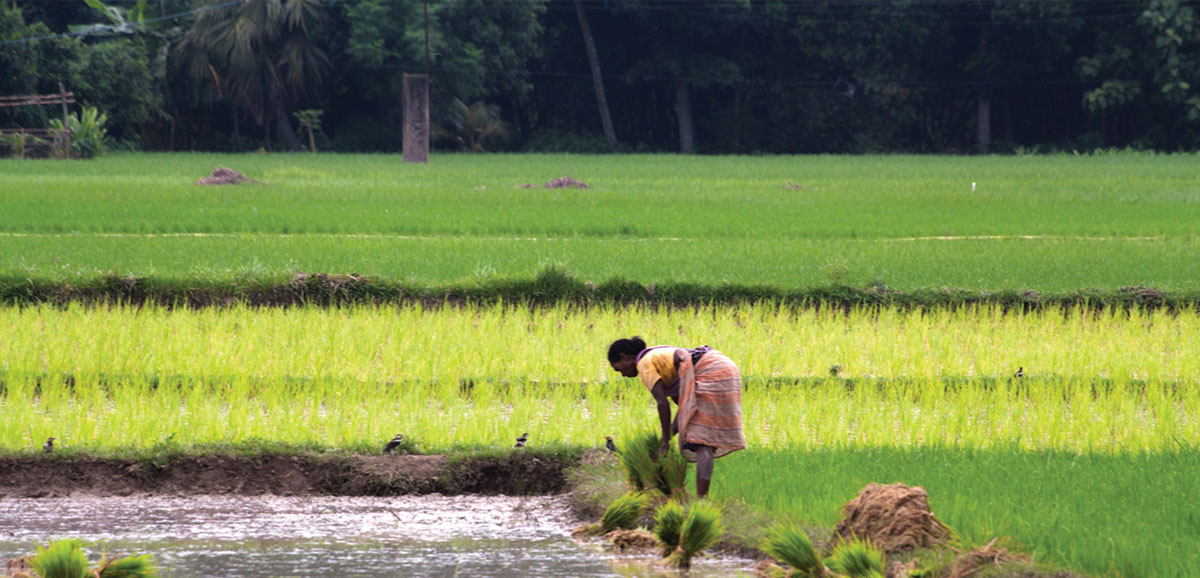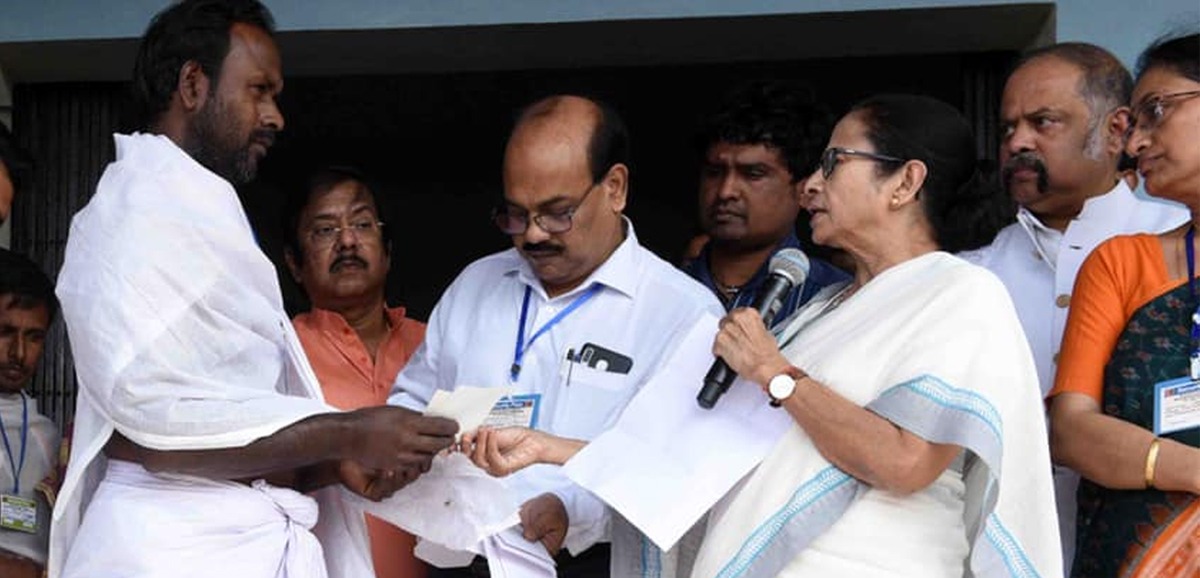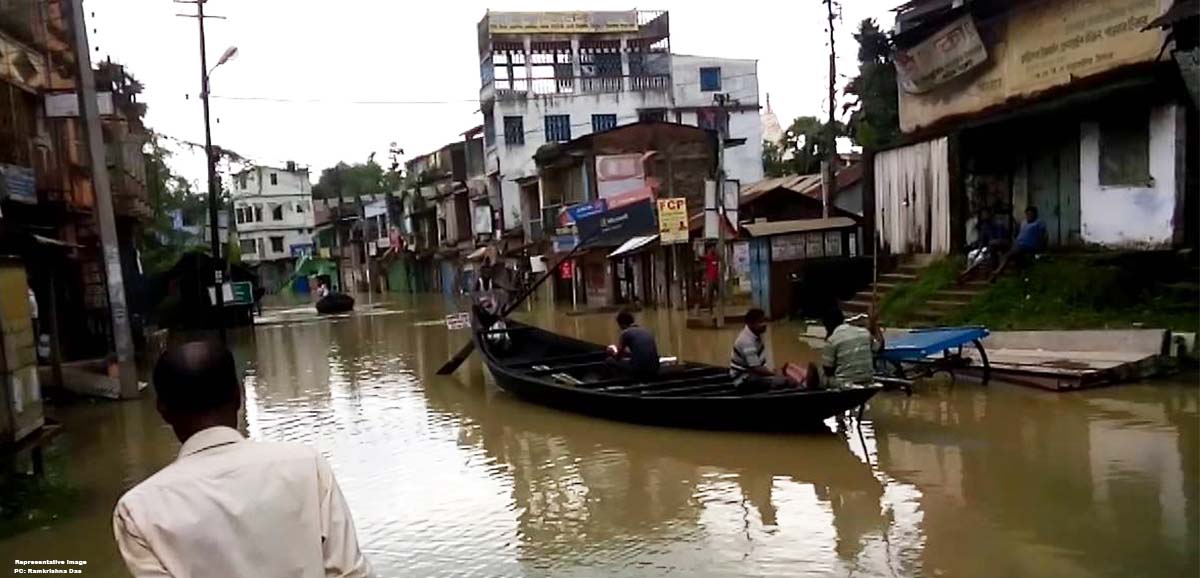Today Chief Minister Mamata Banerjee visited Basirhat and other places to supervise the cyclone relief activities taken up by the State Government. After that, she discussed the relief and rehabilitation efforts with the concerned officials. She handed over cheques of Rs 2.40 lakh to each of the families of the dead.
Excerpts from her press interaction:
The cyclone has destroyed a large area of cultivated paddy, to the tune of 15 lakh hectares. Vegetable and mustard cultivations were also destroyed. Arrangements have to be made quickly to properly store rice. Alternative farming should be encouraged. The Agriculture Department has to become more proactive.
The mangrove forests of the Sundarbans blunted the effect of the cyclone to a large extent. More efforts must be made to conserve the mangroves. Grasses must be planted on riverbanks to prevent the soil from eroding.
Ponds and roads must be cleaned and cleared up; uprooted trees must be removed. Dams have broken down in several places; they need to be repaired as quickly as possible. Pumping machines must be deployed to drain away the water from the vast areas of farmlands that have been flooded.
Many areas are still inundated. The Education Department must ensure that students, especially examinees are able to resume school. Destroyed books, writing copies and other essential things must be replaced immediately.
The affected people must be supplied with adequate amounts of foods like dry foods, crushed rice (chire), puffed rice (muri), potatoes, pulses, biscuits, drinking water, tents, etc. each family would be supplied with 12kg rice, baby food, milk powder, etc. already six lakh water pouches have been distributed, another 50 lakh have to be kept ready.
Mobile medical camps have been opened in every area. Among other things, they must keep anti-snake venom (ASV), medicines for fever and stomach ailments ready.
Every family would be given hurricane lamps and 5 litres of kerosene for lighting them.
In North 24 Parganas, 1,200 electric poles and in South 24 Parganas, 6,000 electric poles would be installed.
Five people died in North 24 Parganas. About 6 lakh people have been affected by the cyclone and more than 5 lakh houses were destroyed. The latter would be repaired. All kinds of help will be provided to the distressed people.
The administration must make much more efforts to solve the problems of the people. More aid must be given. I request all concerned officials and others to not skimp on aid and to not do politics with regard to aid activities.
Properties and crops worth a few thousand crores of rupees have been destroyed. This is a big disaster. The administration’s taking of many pre-emptive measures prevented what could have been a bigger disaster.
It’s important to stand beside the people in times of distress. I am requesting everyone concerned to undertake relief efforts to the utmost of their capabilities so that this becomes a model for the rest of the country.
Within the next 10 days, the affected families will be supplied with six lakh kit bags.










